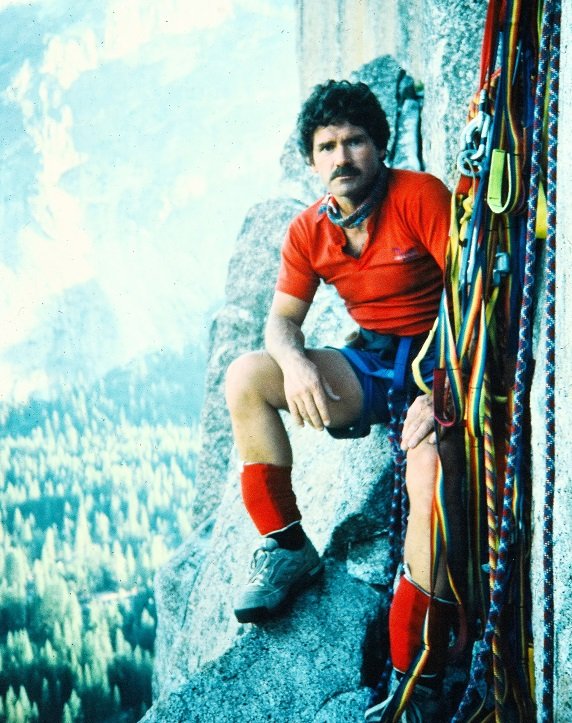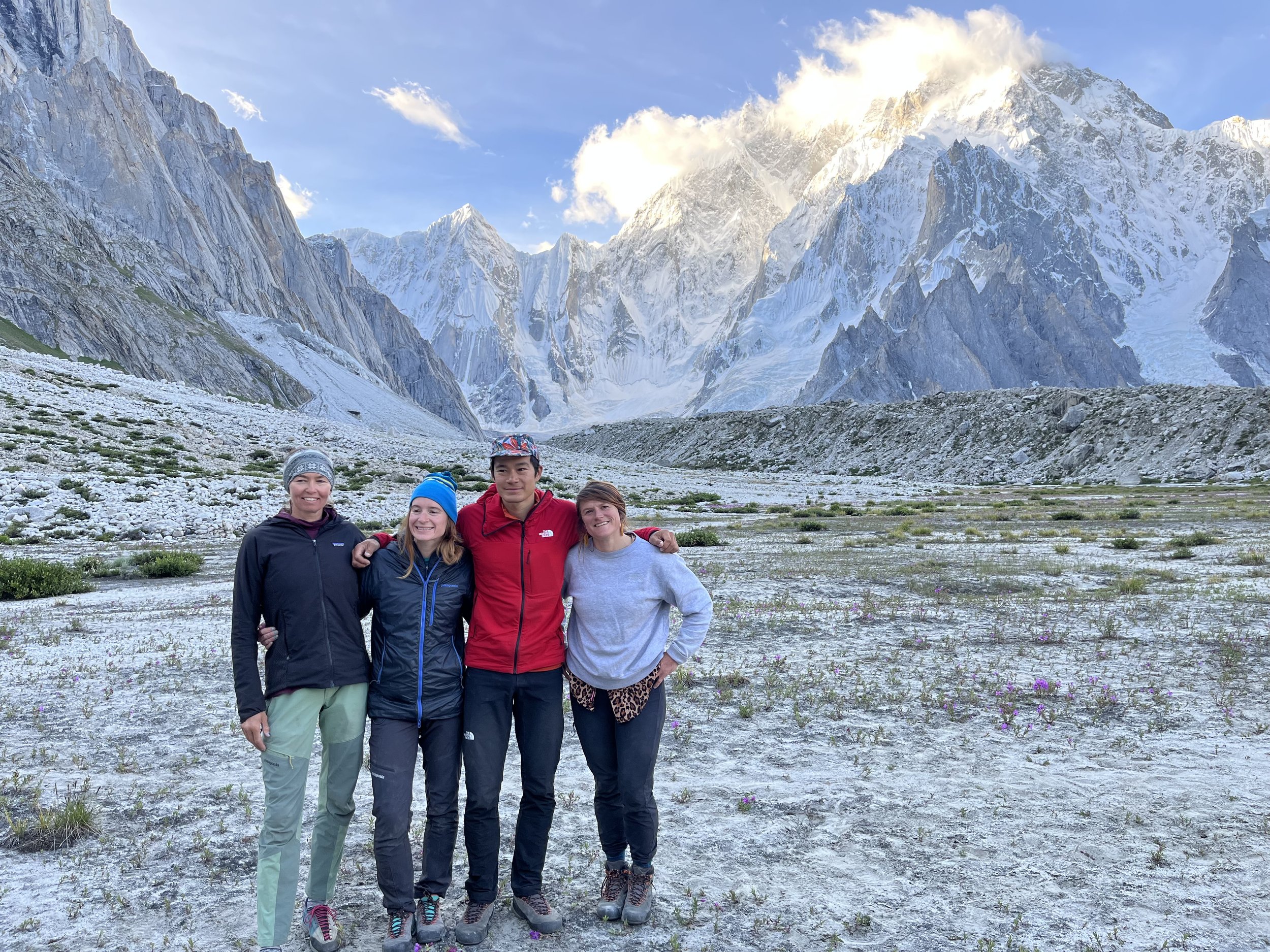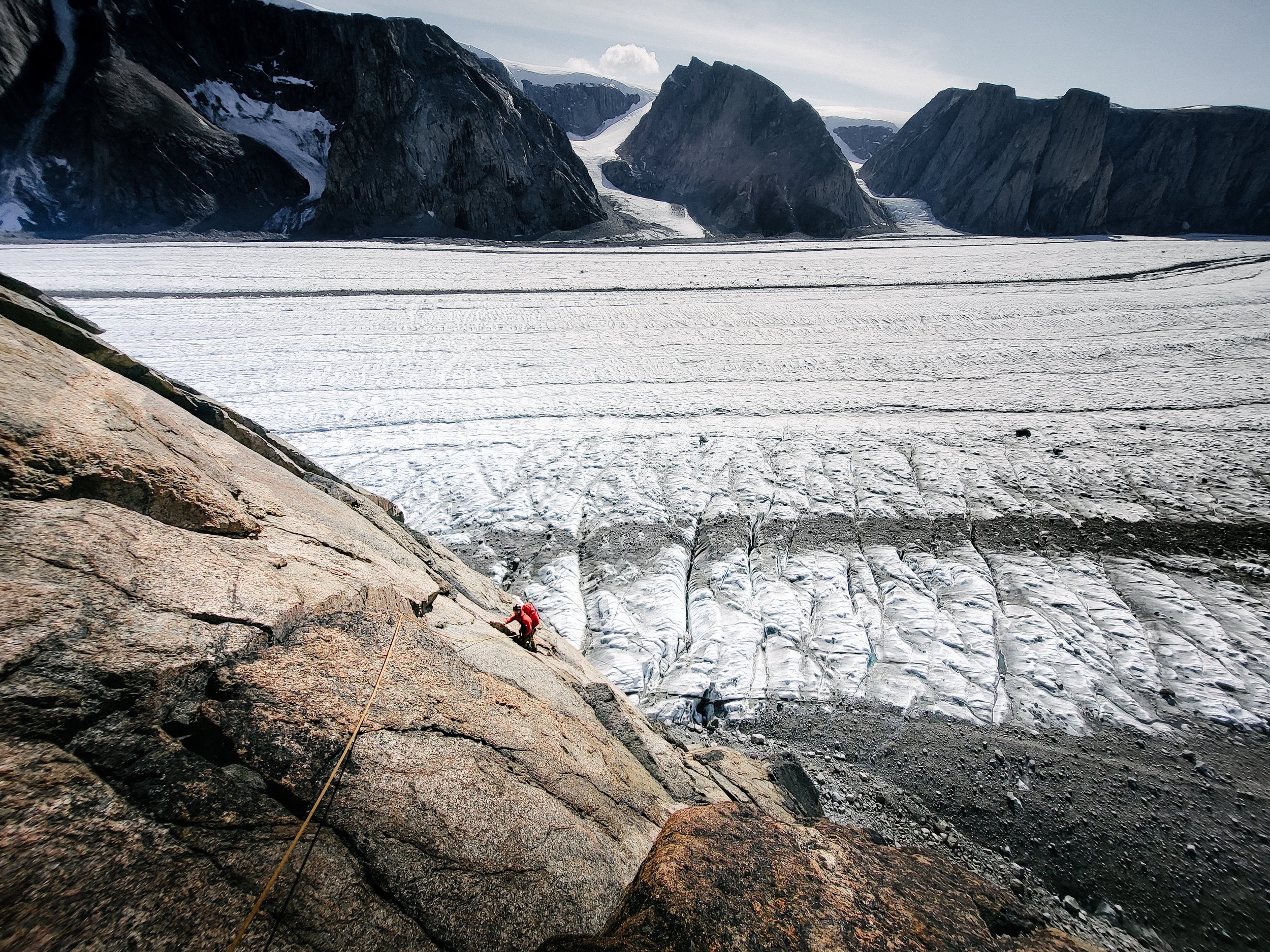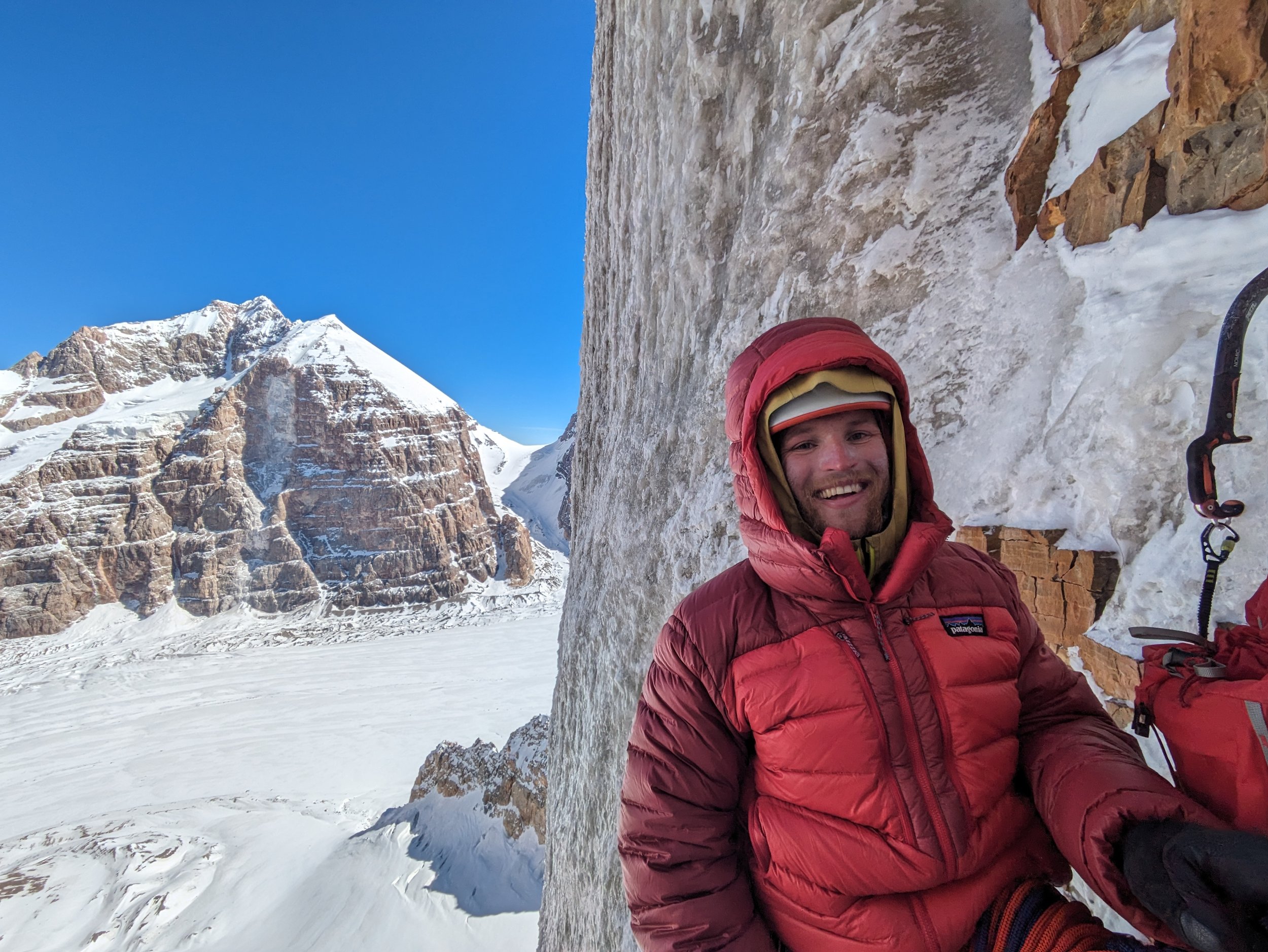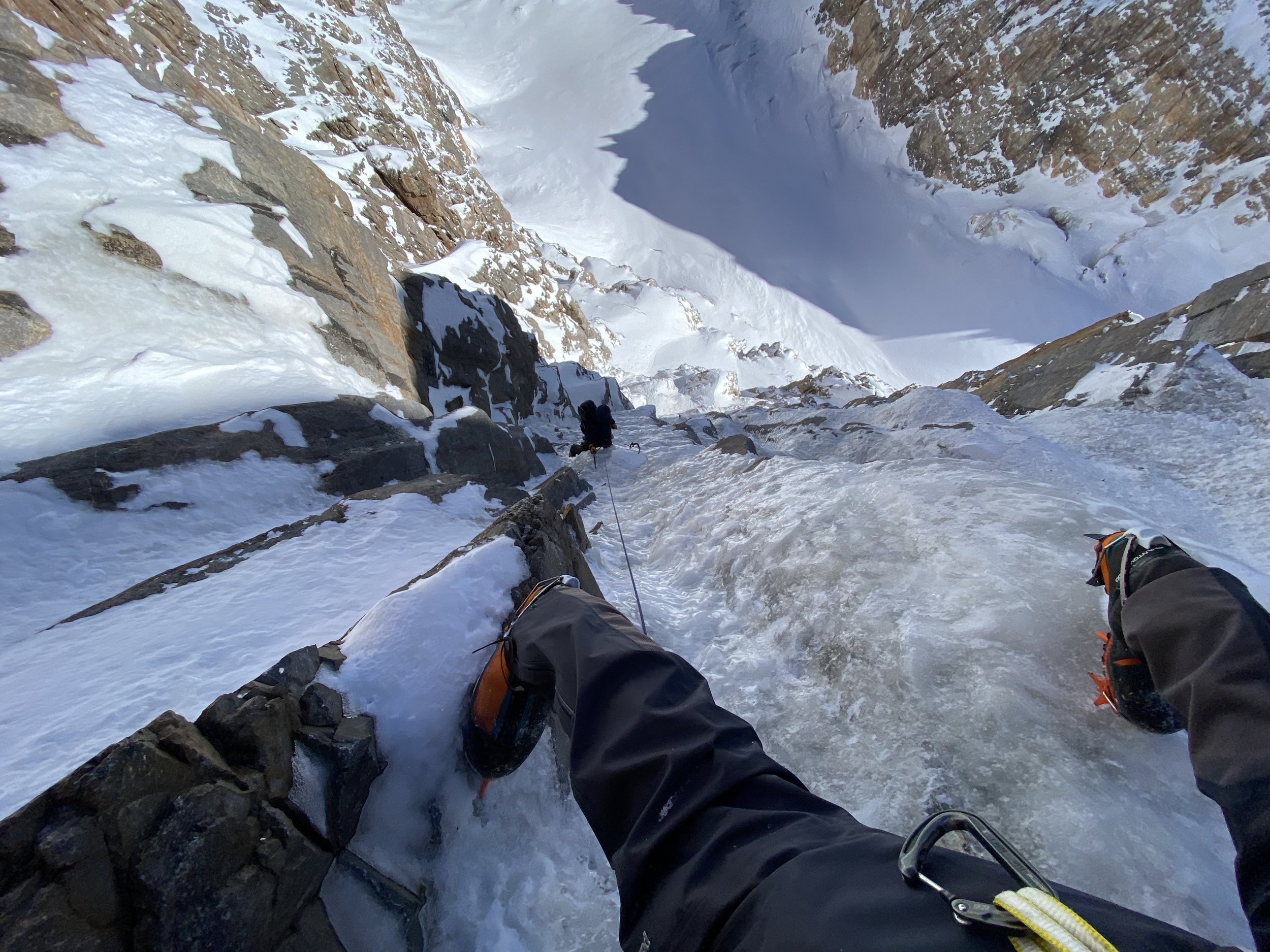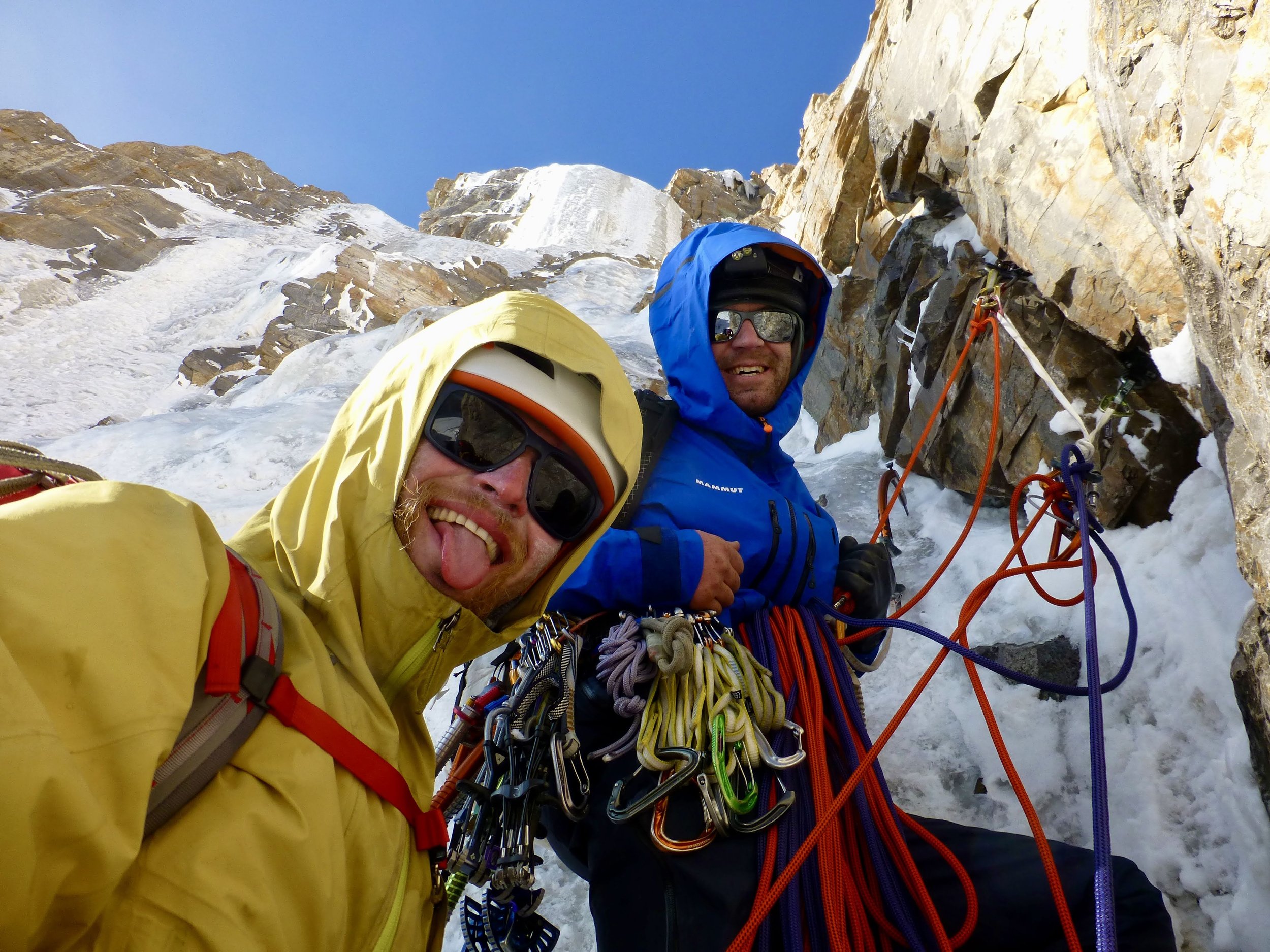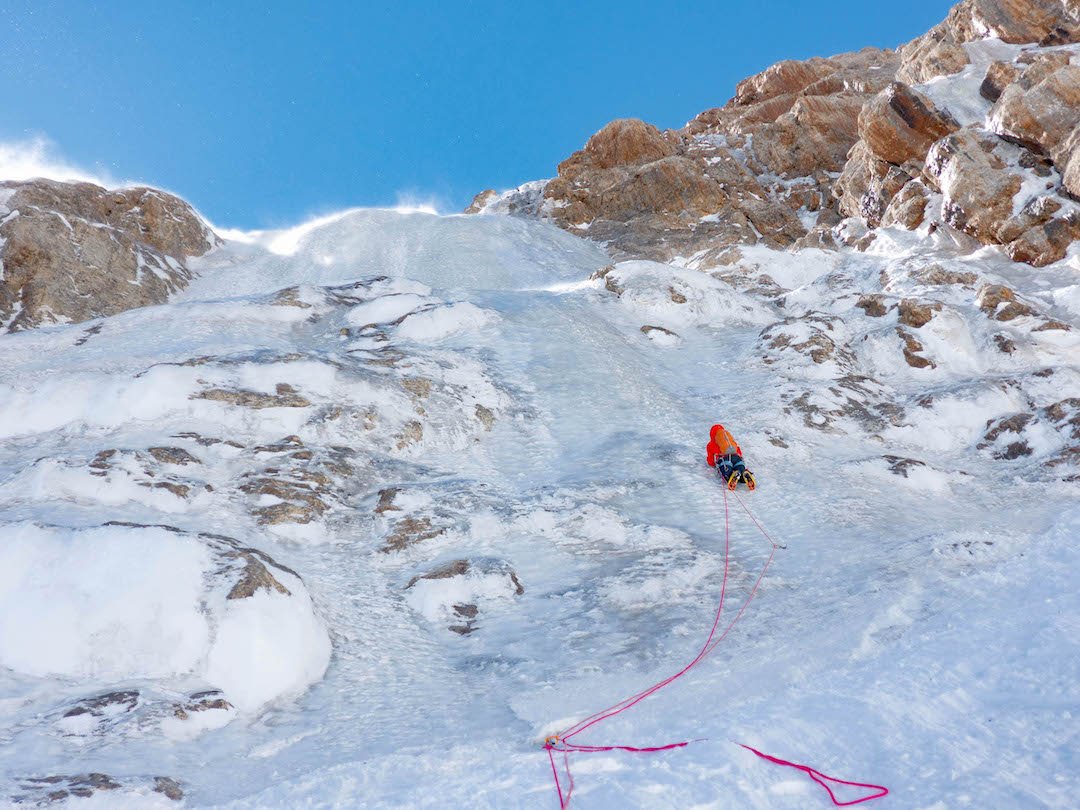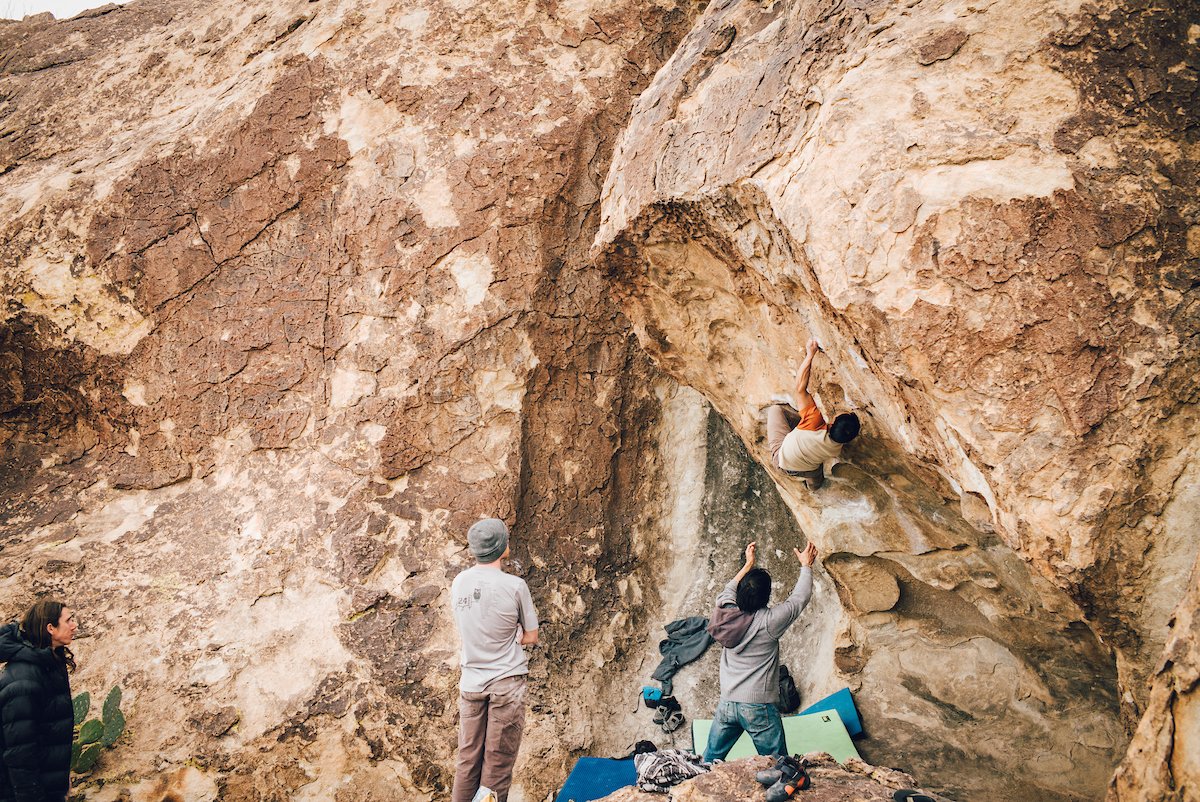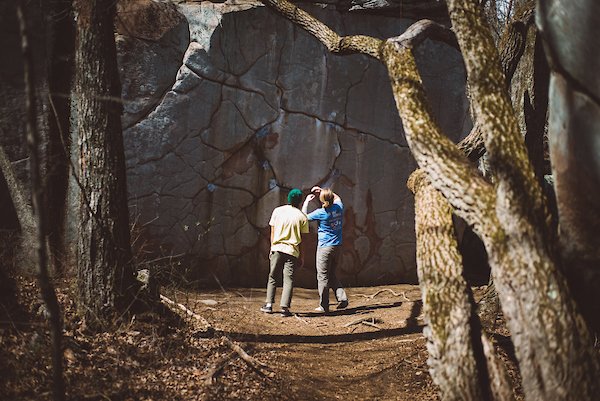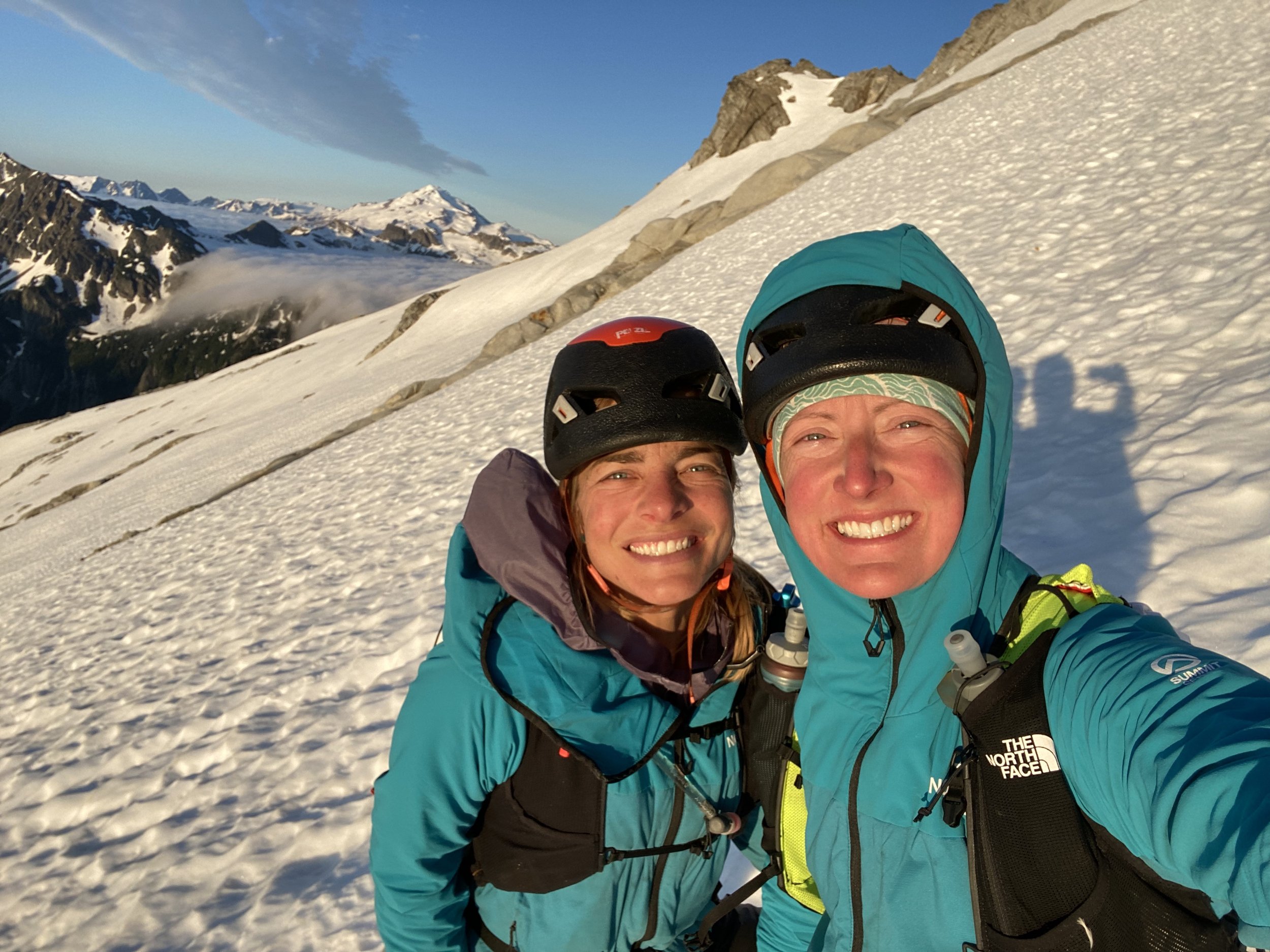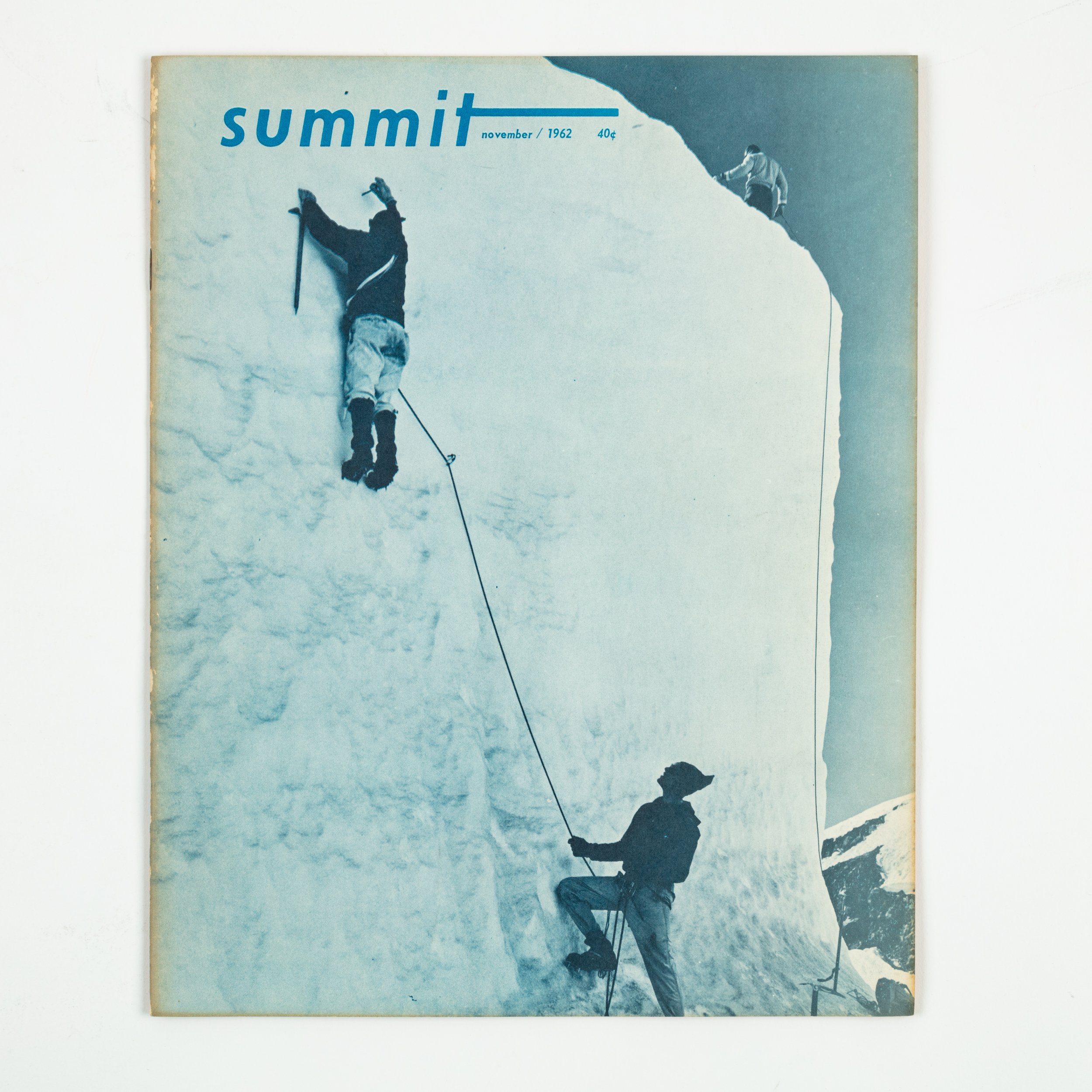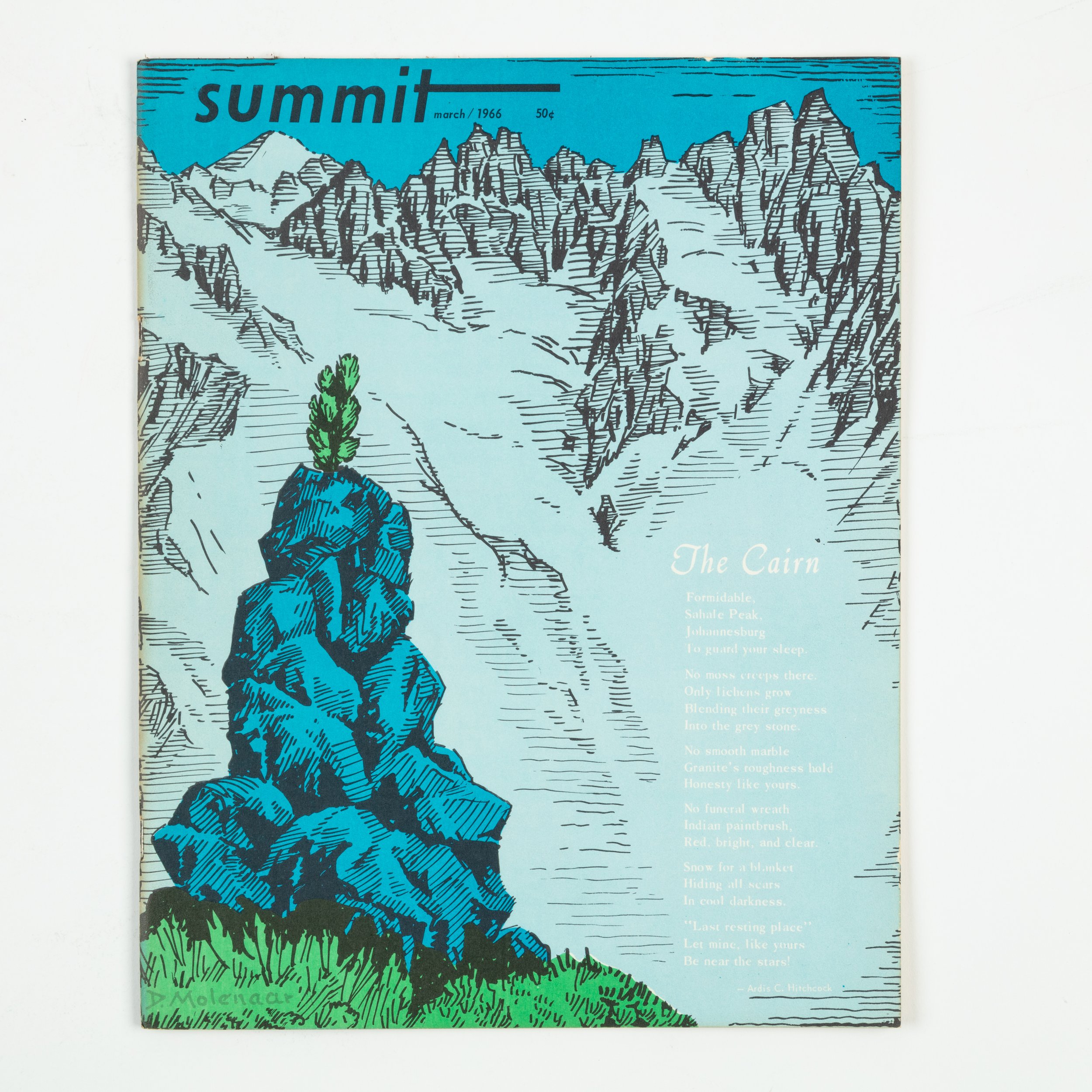Alaska season is almost upon us, and this issue of The Line is focused on Alaska’s legendary Kichatna Mountains. Four first ascents in the Kichatnas from April and May 2023 will be featured in the upcoming AAJ. Here are highlights of those climbs, including a custom story-map from AAC partner onX Backcountry (see “Explore These Routes” below).
Augustin Peak, North Buttress
On April 20, 2023, Nelson Neirinck, Kurt Ross, and Michael Telstad climbed a long route up the north buttress of Augustin Peak, a summit of about 8,600 feet above the Trident Glacier, on the east side of the Kichatnas. Backed by an AAC Mountaineering Fellowship Fund grant, the trio climbed and descended the 4,600-foot route in one long day—creating one of the longest routes in the Kichatna Mountains.
Kurt Ross and Michael Telstad navigate a mixed step low on the north buttress of Augustin Peak, as morning sunlight scrapes across the face. Photo by Nelson Neirinck.
Joseph Hobby takes a moment to enjoy the incredible view down to the Shelf Glacier and beyond after completing the first ascent of the Borealis Face on the Citadel. Photo by Zach Lovell.
Citadel and Rise and Shine
During this same period in April, Joseph Hobby and Zach Lovell flew onto the Shelf Glacier with Paul Roderick of Talkeetna Air Taxi—the first time climbers had landed on this glacier. This gave them easy access to two previously unclimbed lines: the northwest face of the Citadel (8,520 feet), which they called the Borealis Face (2,000’, 85° ice), and the first ascent of Rise and Shine, a previously unnamed formation south of the Riesenstein. This challenging route, Superfly Couloir, went at AI5 M6 A2 in about 10 hours.
Silvia Loreggian cruising the opening of pitch three (5.12 A0) on Cemetery Spire, a “fantastic headwall with good rock quality,” writes climbing partner Stefano Ragazzo. Photo by Stefano Ragazzo.
Cemetery Spire
In mid-May, Italian climbers Silvia Loreggian and Stefano Ragazzo flew onto the Cul-de-Sac Glacier, aiming for a climb of towering Kichatna Spire. Heavy snow at the start of their trip ended those plans. Scoping for alternatives, they found the southwest face of Cemetery Spire. Once the weather cleared, the pair fixed two pitches up the steep rock face and then returned the next day and climbed Gold Rush (600m, 5.12a A1+), with one bivouac on the way back down.
Explore These Routes
Learn More
Zach Lovell’s report about new routes on the Citadel and Rise and Shine is available now at at the AAJ website. The Augustin Peak and Cemetery Spire reports will be published online in the coming weeks and will appear in the Alaska section of AAJ 2024.
The Line is Supported By
The Line is the newsletter of the American Alpine Journal (AAJ), emailed to more than 80,000 climbers each month. Find the archive of past editions here. Contact Heidi McDowell for sponsorship opportunities. Questions or suggestions? Email us: [email protected].




























